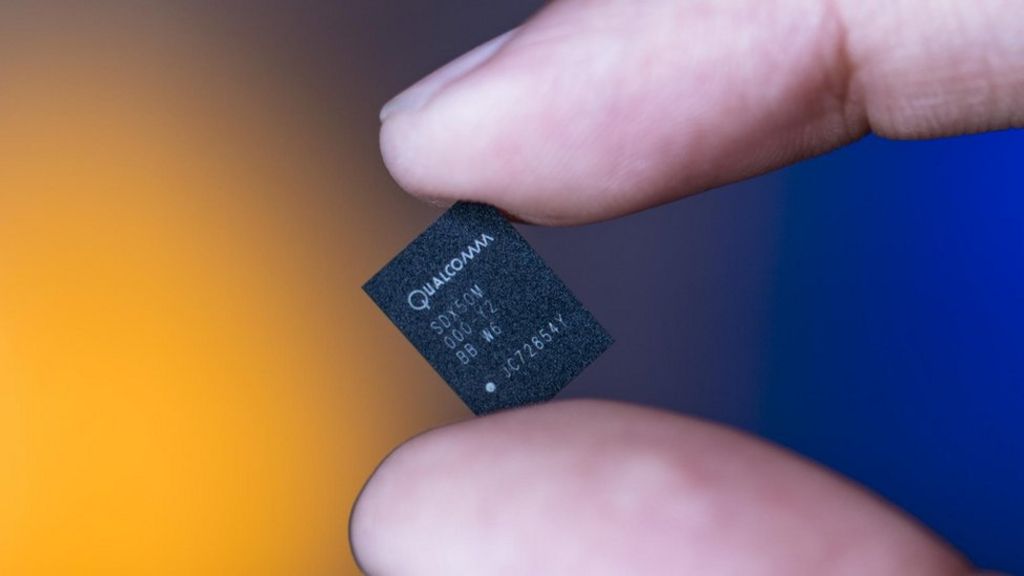'First 5G Mobile Net Connection' Claimed By Qualcomm

 Image copyright
Qualcomm
Image copyright
Qualcomm
Qualcomm has demonstrated mobile internet speeds of 1Gbps using a 5G smartphone chip.
The chipset manufacturer claims this is the first working 5G data connection on a mobile device.
The fifth generation of the mobile network does not yet exist, but it promises faster data speeds and more bandwidth to carry more web traffic.
Qualcomm is describing the demonstration as a "major milestone", but one expert is playing it down.
1Gbps is equivalent to 1,000Mbps, and this speed would enable you to download a one-hour TV programme in HD from BBC iPlayer in less than six seconds.
"It's not a big deal," Prof William Webb, a independent consultant and author of the book The 5G Myth: When vision decoupled from reality, told the BBC.
"5G is not yet clearly defined, they've just postulated what they think it will look like.
"It's not 5G in its final form, so it's premature to say it's a 5G demonstration."
Prof Webb added that speeds higher than 1Gbps were already achievable on 4G.
For example, Huawei's Kirin 970 chipset offered mobile speeds of up to 1.2Gbps when used with compatible network equipment.
Qualcomm said the demonstration, at its laboratories in San Diego, had used its first dedicated 5G chip, the Snapdragon X50 NR modem chipset, on the 28GHz millimetre wave spectrum band.
What is 5G?
Today's 4G mobile networks currently make use of the sub-6GHz frequencies, but these are now heavily crowded.
Mobile operators are running out of capacity to carry the huge amounts of web traffic generated by consumers on billions of mobile devices, in addition to data being sent from internet-enabled sensors in smart devices.
The specifications for 5G have not yet been set out by the global mobile standards body, 3GPP, so various parts of the industry are trying different technologies, with the hope that 5G will be ready by 2019.
Some of the technologies involve optimising the current 4G network by making the transit of data more efficient, in order to offer greater capacity and higher speeds.
But there are also plans to make use of the currently unused 28GHz and 39GHz millimetre wave spectrum bands, which are found in the electromagnetic spectrum between microwaves and infrared waves.
Millimetre waves offer far more bandwidth than the sub-6GHz frequencies, but the radio signal deteriorates if data is transmitted over more than a few kilometres.
"There are many different definitions of 5G, some of which could be implemented by 2019, and those that wouldn't be, such as millimetre wave, which will probably take a lot longer," said Prof Webb.
From Chip War To Cloud War: The Next Frontier In Global Tech Competition
The global chip war, characterized by intense competition among nations and corporations for supremacy in semiconductor ... Read more
The High Stakes Of Tech Regulation: Security Risks And Market Dynamics
The influence of tech giants in the global economy continues to grow, raising crucial questions about how to balance sec... Read more
The Tyranny Of Instagram Interiors: Why It's Time To Break Free From Algorithm-Driven Aesthetics
Instagram has become a dominant force in shaping interior design trends, offering a seemingly endless stream of inspirat... Read more
The Data Crunch In AI: Strategies For Sustainability
Exploring solutions to the imminent exhaustion of internet data for AI training.As the artificial intelligence (AI) indu... Read more
Google Abandons Four-Year Effort To Remove Cookies From Chrome Browser
After four years of dedicated effort, Google has decided to abandon its plan to remove third-party cookies from its Chro... Read more
LinkedIn Embraces AI And Gamification To Drive User Engagement And Revenue
In an effort to tackle slowing revenue growth and enhance user engagement, LinkedIn is turning to artificial intelligenc... Read more

